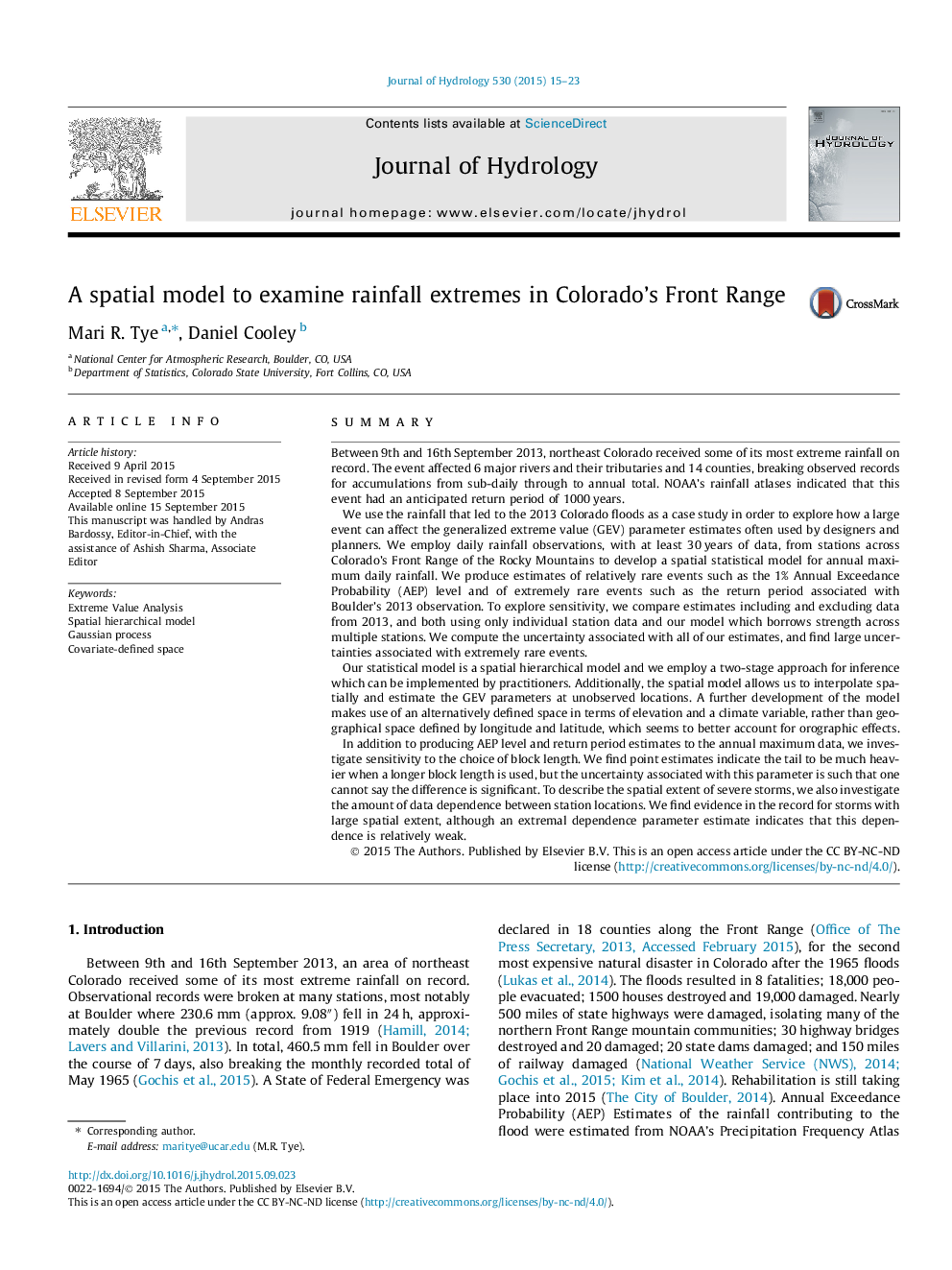| کد مقاله | کد نشریه | سال انتشار | مقاله انگلیسی | نسخه تمام متن |
|---|---|---|---|---|
| 6410184 | 1629921 | 2015 | 9 صفحه PDF | دانلود رایگان |
- We borrow strength across spatial locations to improve GEV parameter estimates.
- We present an easily implemented two-step spatial hierarchical model for extremes.
- We employ a non-traditional climate space to improve local estimates.
- Borrowing strength across space reduces uncertainty and sensitivity to outliers.
- There is some sensitivity to block length in estimates of very rare events.
SummaryBetween 9th and 16th September 2013, northeast Colorado received some of its most extreme rainfall on record. The event affected 6 major rivers and their tributaries and 14 counties, breaking observed records for accumulations from sub-daily through to annual total. NOAA's rainfall atlases indicated that this event had an anticipated return period of 1000Â years.We use the rainfall that led to the 2013 Colorado floods as a case study in order to explore how a large event can affect the generalized extreme value (GEV) parameter estimates often used by designers and planners. We employ daily rainfall observations, with at least 30Â years of data, from stations across Colorado's Front Range of the Rocky Mountains to develop a spatial statistical model for annual maximum daily rainfall. We produce estimates of relatively rare events such as the 1% Annual Exceedance Probability (AEP) level and of extremely rare events such as the return period associated with Boulder's 2013 observation. To explore sensitivity, we compare estimates including and excluding data from 2013, and both using only individual station data and our model which borrows strength across multiple stations. We compute the uncertainty associated with all of our estimates, and find large uncertainties associated with extremely rare events.Our statistical model is a spatial hierarchical model and we employ a two-stage approach for inference which can be implemented by practitioners. Additionally, the spatial model allows us to interpolate spatially and estimate the GEV parameters at unobserved locations. A further development of the model makes use of an alternatively defined space in terms of elevation and a climate variable, rather than geographical space defined by longitude and latitude, which seems to better account for orographic effects.In addition to producing AEP level and return period estimates to the annual maximum data, we investigate sensitivity to the choice of block length. We find point estimates indicate the tail to be much heavier when a longer block length is used, but the uncertainty associated with this parameter is such that one cannot say the difference is significant. To describe the spatial extent of severe storms, we also investigate the amount of data dependence between station locations. We find evidence in the record for storms with large spatial extent, although an extremal dependence parameter estimate indicates that this dependence is relatively weak.
Journal: Journal of Hydrology - Volume 530, November 2015, Pages 15-23
